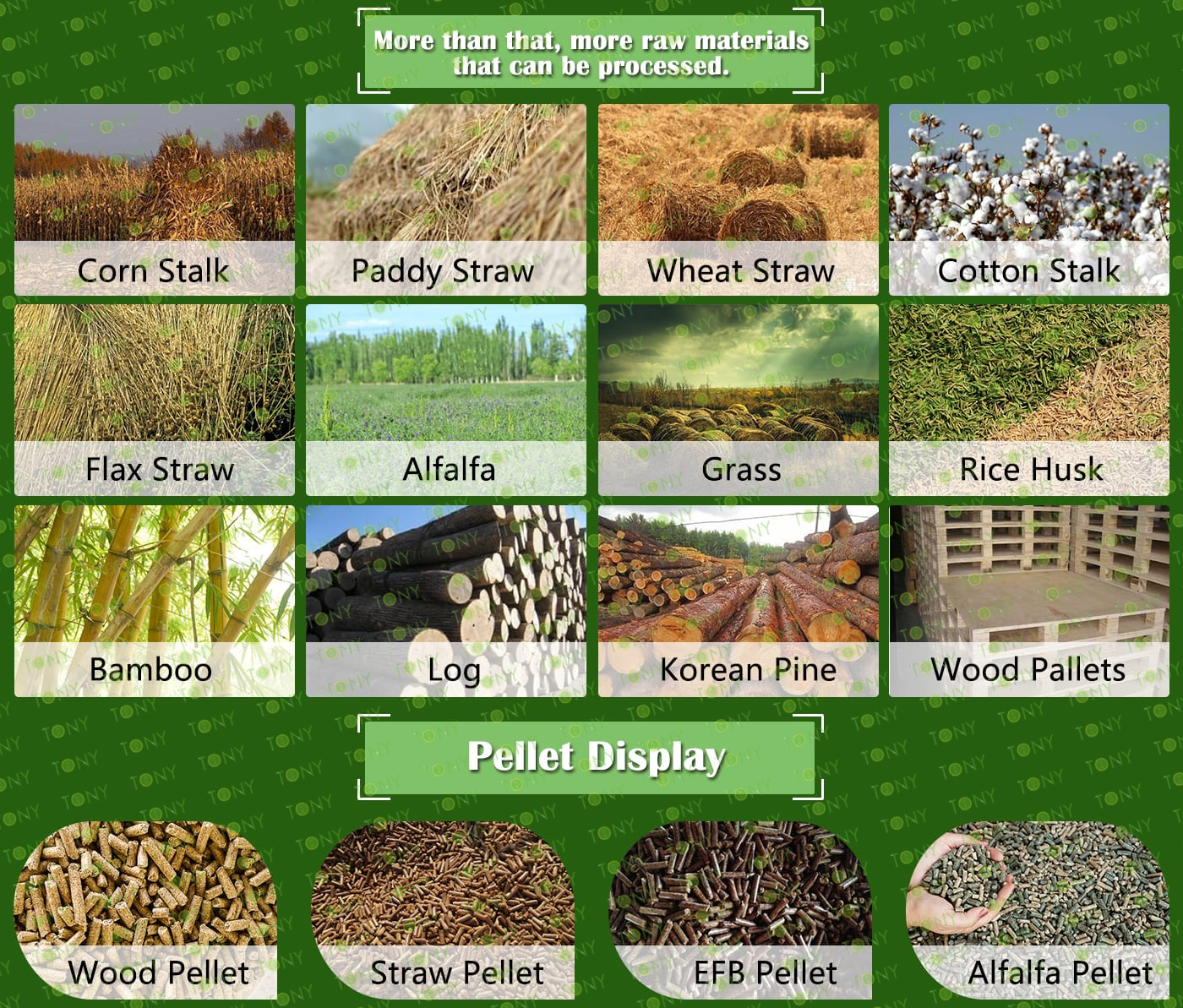1. Optimize the pre-treatment and processing of raw materials
Strictly screen and remove impurities: Use vibrating screens and magnetic separators to remove soil, sand, and metal impurities from the straw, reducing the inorganic pollutants in the ash.
Adjust the raw material ratio: Mix the straw with low ash content and high lignin-containing raw materials (such as wood chips and tree bark) in a ratio of 3:7 or 5:5, reducing the silicon and potassium content in the overall ash, and improving the hardness and combustion stability of the pellets.
Control the moisture content: Keep the moisture content of the raw materials at 10%-15% (precisely controlled by a dryer), ensuring uniform pellet formation density (generally ≥ 1.1g/cm³), and reducing structural disintegration during combustion.
Optimize the pellet forming parameters: According to the characteristics of straw fibers, adjust the ring die compression ratio of the pellet machine (suggested 1:8-1:10) and the forming temperature (80-100℃), ensuring a dense pellet structure and uniform heat release during combustion.

2. Improve combustion equipment and operating conditions
Control the furnace temperature: Adjust the air supply volume and fuel feed rate to stabilize the furnace temperature at 600-800℃ (install temperature sensors for real-time monitoring), avoiding local overheating. For small heating furnaces, a segmented air supply design can be adopted to reduce the duration of the high-temperature zone.
Optimize the air ratio: Control the air-fuel ratio according to the combustion characteristics of straw pellets at 12:1-15:1 (adjustable through frequency conversion of the fan), ensuring complete combustion and avoiding excessive cold air. Some boilers can be equipped with a secondary air device to enhance the turbulence of the furnace interior and reduce ash deposition.
Select suitable boiler types: Choose boilers specifically designed for high ash content biomass (such as those with inclined grate, large furnace, and ash automatic removal devices), or retrofit existing boilers (such as expanding the furnace volume, adding ash removal ports, and coating the heat exchange surface with anti-coking coatings).
Regularly clean ash: After each combustion, clean the furnace, grate, and heat exchange surface manually or mechanically (using scraper or vibration devices); check and clean the flue every week to avoid clogged ash blocks.
3. Add anti-coking additives
Spray a small amount of magnesium oxide (MgO) or silicon dioxide (SiO₂) powder into the furnace before combustion, which reacts with the molten ash to form low-viscosity residues, facilitating their discharge.
4. Standardize combustion operation and daily management
Strengthen operator training: Clearly define the fuel feed volume and air supply volume adjustment standards for different loads to avoid temperature fluctuations due to improper operation.
Establish a regular maintenance system: Monthly inspections of grate gap, fan pressure, and the accuracy of thermocouple temperature sensors ensure the equipment is in optimal operation.
Through the above measures, the problem of coking of straw pellets can be systematically solved in the three links of raw material, processing and combustion. The core logic is: reducing the influence of low-melting-point elements in the ash → controlling the combustion temperature and air ratio → ensuring the timely discharge of the ash, ultimately achieving efficient and clean combustion of straw pellets and fully leveraging their advantages as a renewable energy source.





















